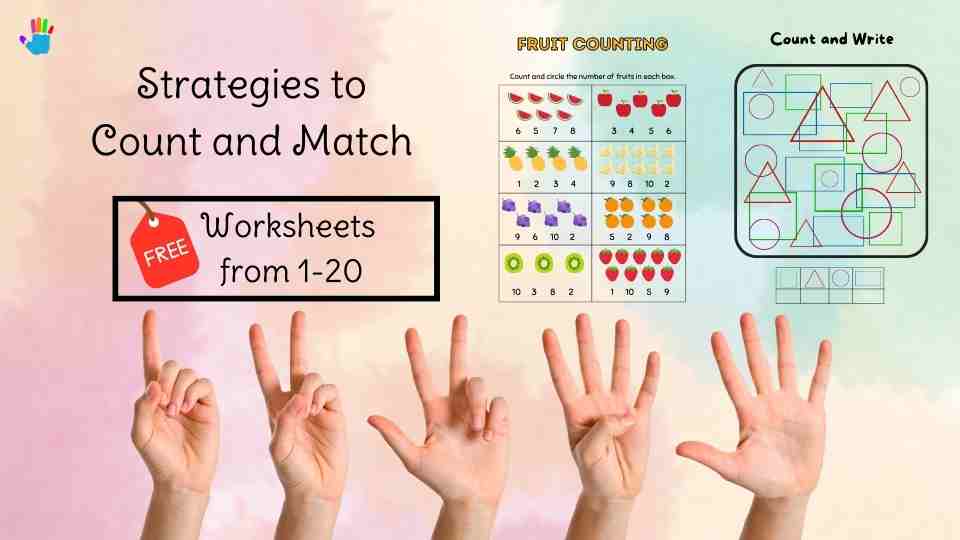Number Tracing Worksheets 1-10
Number Tracing Worksheets 1-10 are an integral part of our lives, and mastering them is crucial for a child’s early development. Introducing number tracing worksheets can be an effective way to engage young learners and help them build a strong foundation in numerical literacy. In this article, we will explore the importance of number tracing worksheets, discuss how to use them effectively, delve into their design and layout, provide tips for effective tracing, explore interactive activities, touch on customization options, and highlight online resources available for number tracing worksheets.
Importance of Number Tracing Worksheets
Benefits for Early Childhood Development
Number tracing worksheets offer numerous benefits for early childhood development. They provide an interactive and hands-on approach to learning numbers, allowing children to develop essential skills such as hand-eye coordination, concentration, and attention to detail. By engaging in tracing activities, children also enhance their cognitive abilities and develop a solid numerical foundation for future academic pursuits.
Enhancing Fine Motor Skills
Tracing numbers on worksheets and counting worksheets requires children to use their fine motor skills, which involve precise control of hand movements. As they grip a writing instrument and follow the lines of each number, they improve their hand dexterity, finger strength, and coordination. These skills are essential for tasks like writing, drawing, and other activities that demand controlled movements.
Promoting Numerical Literacy
Number tracing worksheets play a crucial role in promoting numerical literacy among young learners. Through tracing activities, children become familiar with number formation, recognition, and sequencing. They gain an understanding of the numerical symbols and their corresponding quantities. This foundation paves the way for more advanced mathematical concepts in the future.
How to Use Number Tracing Worksheets
To ensure maximum effectiveness, there are several key considerations when using number tracing worksheets.
Providing Clear Instructions
When introducing number tracing worksheets, it is important to provide clear instructions to children. Explain the purpose of the activity and demonstrate how to trace each number correctly. Emphasize the importance of starting at the designated point and following the strokes in the right order.
Starting with Basic Numbers
Begin with simple numbers, such as 1, 2, and 3, when introducing tracing worksheets to young learners. These basic numbers are easier to trace, allowing children to gain confidence and develop the necessary tracing skills gradually. As they become more proficient, progressively introduce more complex numbers.
Gradually Progressing to Complex Numbers
As children become comfortable tracing basic numbers, gradually introduce more complex ones. This progressive approach ensures a gradual increase in difficulty, allowing children to refine their tracing skills and tackle more
complex numbers with confidence. Introduce numbers with curves, diagonal lines, and more intricate formations. This approach helps children build their tracing abilities step by step, ensuring a smooth transition to more challenging numerical tasks in the future.
Design and Layout of Number Tracing Worksheets
The design and layout of number tracing worksheets significantly impact their effectiveness in engaging children and facilitating learning. Consider the following elements when creating or selecting worksheets:
Clean and Simple Designs
Opt for clean and clutter-free designs that minimize distractions. A simple background with contrasting colors for the numbers and tracing lines makes it easier for children to focus on the task at hand. Avoid excessive decorative elements that may divert their attention.
Large and Legible Numbers
Choose worksheets with large, legible numbers that are easy for children to recognize and trace. The numbers should be clearly displayed, ensuring that children can distinguish between different numerals and understand their unique formations.
Ample Writing Space
Ensure that the worksheets provide ample space for children to practice tracing. Sufficient writing space allows them to comfortably maneuver their writing instrument and trace the numbers accurately. This helps in developing their motor skills and maintaining consistency in tracing.
Tips for Effective Number Tracing
To optimize the learning experience with number tracing worksheets, consider the following tips:
Holding the Writing Instrument Correctly
Encourage children to hold their writing instrument correctly, with a relaxed grip and proper finger placement. This facilitates controlled movements and promotes good writing habits from an early age. A tripod grip, where the instrument is held using the thumb, index, and middle fingers, is ideal for precise tracing.
Tracing with Precision
Emphasize the importance of tracing each number with precision. Encourage children to follow the lines carefully, ensuring that they stay within the boundaries of the tracing area. This attention to detail helps in developing accuracy and consistency in forming the numbers.
Practicing Regularly
Consistent practice is key to mastering number tracing skills. Encourage children to engage in regular tracing sessions to reinforce their learning and improve their proficiency. Short, frequent practice sessions are more effective than sporadic, lengthy sessions. Make tracing a fun and enjoyable activity to motivate children to practice regularly.
Interactive and Engaging Number Tracing Activities
To make number tracing more interactive and engaging, incorporate the following activities:
Using Colors and Visual Cues
Introduce colors to make the tracing process more visually appealing. Assign different colors to the numbers and tracing lines, making it exciting for children to follow the paths. Visual cues, such as arrows indicating the tracing direction, can also help children understand the proper order of strokes.
Incorporating Games and Puzzles
Infuse games and puzzles into number tracing activities to enhance engagement. For example, create a scavenger hunt where children need to trace numbers in a specific sequence to reveal a hidden picture or solve a puzzle. Such interactive elements add an element of fun and challenge, keeping children motivated and eager to trace.
Rewarding Progress
Recognize and reward children’s progress in number tracing. Offer praise, stickers, or small incentives when they demonstrate improvement or achieve specific milestones. Positive reinforcement boosts their confidence and encourages continued effort and participation.
Download Number Tracing Worksheets 1-10
Kindly Allow Pop ups to let the Download Begin!
Number Tracing Worksheets 1-10 pdf download here.
Customizing Number Tracing Worksheets
To cater to individual preferences and maximize engagement, consider customizing number tracing worksheets in the following ways:
Adding Personalized Elements
Include elements that resonate with the child’s interests or experiences. For example, incorporate their favorite animals, objects, or characters into the worksheets. Personalization creates a sense of ownership and connection, making the tracing experience more meaningful to the child.
Incorporating Themes and Characters
Design worksheets with themes or characters that align with popular children’s stories, cartoons, or educational concepts. For example, create number tracing worksheets featuring superheroes, animals, or vehicles. This integration of familiar
themes and characters adds an element of familiarity and excitement, capturing the child’s attention and making the tracing process more enjoyable.
Tailoring Worksheets to Individual Needs
Consider the individual needs and abilities of each child when selecting or creating number tracing worksheets. Adapt the difficulty level, font size, or layout based on their developmental stage and skill level. Providing worksheets that are suitable for their specific needs ensures a personalized learning experience and promotes optimal progress.
Online Resources for Number Tracing Worksheets
In today’s digital age, numerous online resources are available to support number tracing activities. Explore the following options:
Websites and Apps
Various websites and mobile applications offer free or paid number tracing worksheets and alphabet tracing worksheets. These platforms often provide interactive features, such as animated tracing lines or sound effects, to engage children and enhance their learning experience. Some websites also offer printable worksheets that can be downloaded and used offline.
Printable Worksheets
Printable number flashcards tracing worksheets are widely available on educational websites, blogs, and parenting resources. These worksheets can be easily printed and used at home or in educational settings. Look for worksheets that align with the child’s developmental stage and offer clear and well-designed tracing activities.
Virtual Tracing Tools
Virtual tracing tools, such as touchscreen devices or interactive whiteboards, provide a dynamic and immersive tracing experience. Children can use their fingers or stylus pens to trace numbers directly on the screen, receiving instant feedback and guidance. Virtual tools offer the advantage of customization, interactive features, and the ability to save and revisit tracing progress.
Conclusion
Number tracing worksheets play a vital role in early childhood development by fostering numerical literacy, enhancing fine motor skills, and promoting cognitive abilities. By providing clear instructions, starting with basic numbers, and gradually progressing to more complex ones, children can develop their tracing skills effectively. Design and layout elements such as clean designs, large numbers, and ample writing space optimize the learning experience. Interactive activities, customization options, and online resources further enhance engagement and personalization. Incorporating number tracing worksheets into educational routines nurtures a strong numerical foundation and sets the stage for future mathematical success.
FAQs
Q1. At what age should I introduce number tracing worksheets to my child?
Introduce number tracing worksheets when your child shows an interest in numbers and demonstrates the ability to hold a writing instrument. Typically, children around the age of three to five years old can start engaging in tracing activities.
Q2. How often should my child practice number tracing?
Encourage regular practice sessions, aiming for short but frequent intervals. Five to ten minutes of tracing activities two to three times a week can yield significant progress.
Q3. My child struggles with tracing numbers accurately. What can I do to help?
Provide guidance and practice opportunities. Break down the tracing process into smaller steps, use visual cues or guides, and offer positive reinforcement for their efforts. Patience and encouragement are key.
Q4. Can I create my own personalized number tracing worksheets?
Absolutely! There are numerous online resources that allow you to customize and create your own worksheets. Incorporate elements that resonate with your child’s interests, and tailor the difficulty level to their abilities.
Q5. Are there any other activities I can combine with number tracing to enhance learning?
Yes! You can incorporate counting games, number recognition activities, and real-life applications of numbers to reinforce learning. For example, counting objects, identifying numbers in the environment, or playing number-based board games can complement number tracing worksheets.
Now that you have a comprehensive understanding of the benefits, techniques, and resources related to number tracing worksheets, you can confidently introduce this engaging and effective learning tool to support your child’s early numerical development. Enjoy the journey of tracing.





